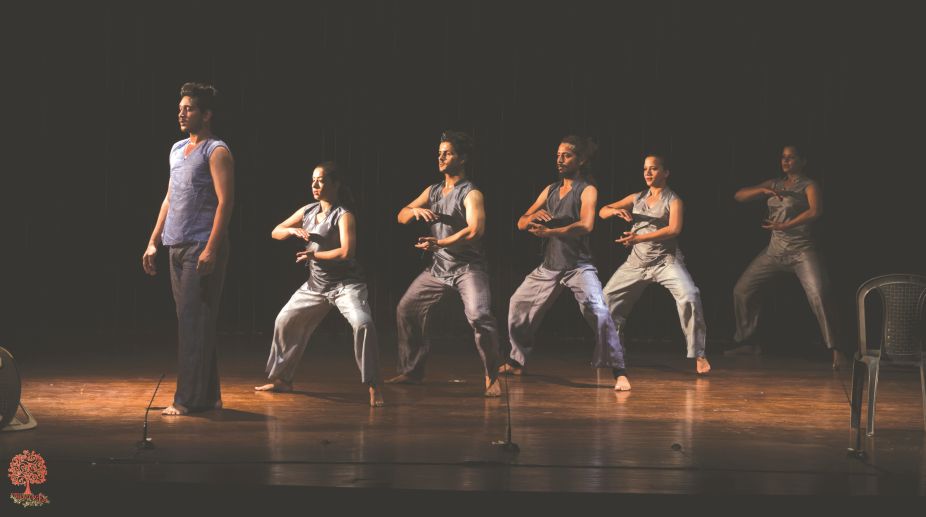Sheeba Chaddha shares her childhood link with ‘Bandish Bandits’ script
Actress Sheeba Chaddha recently opened up about her childhood connection to the script of “Bandish Bandits.”.
In a bid to encourage young talents, Dance Drishtikon 10×10 and IIC’s Double Bill provided a platform to upcoming dancers. A review by Manjari Sinha.

We often worry about the future of our classical music and dance tradition, but very few offer a platform to the budding talents, who have got potential and need to be promoted. The India International Centre (IIC) has taken keen initiative to showcase such upcoming artistes on a regular basis.
The Double Bill Concert series is one such endeavour of the IIC. There was another admirable show curated by Aditi Mangaldas, who painstakingly devotes time to nurture and promote young dancers.
Advertisement
Aditi Mangaldas is known for pushing the boundaries of Kathak and expanding it beyond tradition to lend contemporaneity, while keeping the grammar and form intact. Her scintillating performances have received critical acclaim worldwide.
Advertisement
Aditi Mangaldas Dance Company, the Drishtikon Dance Foundation, presented a unique dance evening titled “Dance Drishtikon: 10×10” at the LTG auditorium, showcasing brilliant performances by the Drishtikon repertory dancers, musicians and her disciples in ten short pieces bound together by a single conceptual thread based on their own perception of “numbers”.
Aditi challenged the youngsters to conceptualize, choreograph and dance their own production based on their chosen number as a solo, duet or a group performance. The rare opportunity brought forth 10 remarkable music and dance works of 10 minutes duration each, around numbers 1 to 10. It was a pleasure to watch young talents one after the other, each making a personal statement of individualistic value, based on their chosen number.
The evening opened with Gauri Diwakar, who brought the analogy of breath with number 1. Just like the identity of 1 does not change but adds incrementally; each breath one takes, adds one moment to life, becoming an unending “Prana”, transforming one’s life continuously. ‘
To sense the power of the infinite, Gauri showed through her dance enhanced by the thoughtfully conceived music, where a steady “Shadja” on the Flute marked the elongated breath on just the background of a tuneful Tanpura.
The controlled movements of Gauri, from sitting to slowly standing posture along with the Alap in the morning raga Lalit gradually proceeded to the afternoon raga Shuddha Sarang as the dance picked up with the flow of breath and reached the Sandhiprakash raga of the evening underlining the fact how time passes along with our breath, taken one at a time. Incorporating the technique and even Padhant of Kathak, Gauri concluded with a Chakradar Tihai of “Kit-tak thun thun.” that dramatically stopped at the inevitable “Sam”.

Number 2 was a duet by Rashmi Uppal and Dhirendra Tiwari, depicting the contrast between yesterday and tomorrow in the Hindi word “Kal”. Number 3 was a Triveli of Vocal music, Tabla and Pakhawaj performed by Faraz Ahmed, Ashish and Mohit Gangani. Number four was a foursome ‘Chaaraawali’ conceived by Rachna Yadav and Anindita Acharji.
Number 5 (Elements) and 6 (Seeing the Unseen), both were contemporary dance choreographies based on Kathak, mentored by Deepak K Shivaswamy. Number 7 (Suryashva), 8 (Nirantar the Infinite), 9 (Nau) and 10 (Dashavatar), a contemporary dance work, were all proof of the exceptional potential of these young talents and their continued association with the type of training and philosophy that has literally emerged as the Drishtikon (or Aditi Mangaldas) Gharana. The concept of 10×10, curation and mentoring for all the pieces was, of course, by Aditi Mangaldas.
* * *
The Double Bill Dance Concert
The second edition of the recently started Double Bill Concert series of Music and Dance by the IIC, promoting young talents; showcased Sarita Kalele from Thane in a solo Kathak and Anjali Krishnan from Delhi in a Mohiniyattam recital respectively. Trained from a very young age under the tutelage of Pandita Uma Dogra, a leading exponent of Jaipur Gharana; Sarita has performed extensively both Solo and with her reputed Guru in prestigious festivals at home and abroad.
Opening her brilliant performance with the Panchakshar Shiva-Stuti, competently composed and melodiously sung by Manoj Desai in raga Malkauns, set to Drut Ektala, Sarita interspersed it with Aamad, Tode, Tukde and Parans like “Taak thunga takita thunga…”, depicting various attributes of Lord Shiva, concluding with the “Garal-Paan” pose.
She chose Pancham-Sawari, the challenging tala of 15 beats cycle and later a tala of 9 beats cycle, composed by her learned Guru; to showcase her extraordinary sense of rhythm revelling on the rhythmic canvas of the difficult Talas, playing with time with all its fractional intervals. And she did it all with effortless ease.
In between the two demanding Talas, Sarita regaled the audience with her enchanting Abhinaya on a Hori composition of the legendary Pt Durga Lal in raga Kafi. As a preface to the Hori “Na maro Shyam pichkari…”, Sarita first created the atmosphere of the festival of colours dancing on the Lehera in the same raga set to Teentala.
The composition sung as a slow Dadra, took a dramatic turn with a Bandishi Thumri in Drut Teentala with the lyrical content of Radha -Krishna “Chhed-Chhad” interspersed with Kavitta and pure dance sequences, before it returned back to the original pace and the poetic cadence of the Hori composition; to conclude the graceful Abhinaya of the Uttam Nayika that Radha was! The Double Bill Dance concert concluded with the Mohiniyattam recital by Anjali Krishnan, a talented disciple of Guru Jayaprabha Menon, who was there to conduct the live orchestra accompanying the dance of the enchantress.
Advertisement